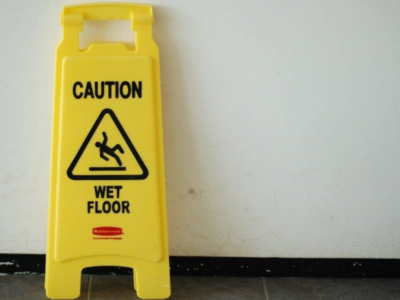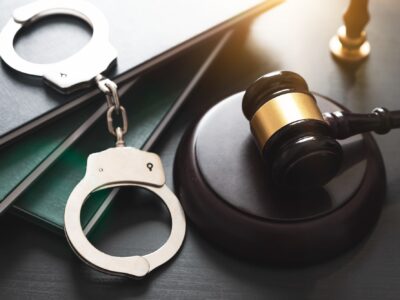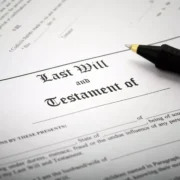There are numerous difficulties to Minnesota DWI/DUI captures. The truth of the matter is that officers must pursue strict and point by point strategies. On the off chance that they go amiss from legitimate DWI/DUI norms anytime, the case can be expelled. In this article we have delineated few the strategies pursued. For an audit of your specific case, call us at 612.240.8005.
THE STOP
It is nothing unexpected that most DWI captures happen between the long periods of 11 p.m. furthermore, 2:30 a.m. This is prime drinking time and in many states the time that bars are preparing to close. Therefore, law authorization officers locate a heap of various motivations to stop drivers amid this timespan. One of the difficulties to a DWI is that the stop itself was invalid and dependent on affectation as opposed to undeniable realities supporting a doubt of unlawful direct.
For a stop to be substantial, the officer must have a sensible doubt that a particular wrongdoing has been submitted. It is inadequate, for instance, for an officer to stop a vehicle basically on the grounds that it looked commonly suspicious. There must be some indicia that a particular wrongdoing has been submitted. Regularly officer influence a blunder around there and the stop itself to can be tested. In the event that the stop is invalid, anything originating from the quit including field balance tests and later breath, blood or pee tests, may smothered.
The officer will regularly refer to various driving side effects that they are prepared to search for as indicia that a driver might be impeded. Awfully frequently, these guaranteed indications are basically a fiction made to approve the stop. Driving side effects include:
Weaving (inside the path or intersection path lines). This can here and there be fought by taking photos of the roadway which may demonstrate that snow secured path line or that path lines had disintegrated after some time and neglected to exist where the officer asserts a path lines was crossed. On the off chance that an officer can be impugned on this point, his validity is stressed and may result in a rejection.
wide or moderate turns. Officers regularly guarantee that they halted a driver since they made a turn that was excessively wide or that the turn was made excessively moderate. This can regularly be arraigned by checking on the corner where the supposed lead happened. A turn that is wide may, truth be told, damage no transit regulations.
speeding. Regularly law requirement officers will fight that a driver was surpassing as far as possible. This is effectively contestable if the officer did not utilize a laser or radar gadget to ascertain the speed. It isn’t bizarre for an officer originating from the other way to induce that a vehicle venturing to every part of the other way is surpassing as far as possible without utilizing any solid estimation procedures.
minor infringement. In the event that the officer can’t watch any undeniable wrong driving behavior they may offer as an explanation behind their stop minor infringement, for example, safety belt infringement, objects dangling from the back view reflect or notwithstanding having a tag that is darkened or with a tag light that is excessively diminish. Once in a while these guaranteed purposes behind a stop damage the law, unreasonably regularly, they don’t.
THE APPROACH
After a vehicle has been halted, there has been a seizure. Therefore, the officer can go no further if his/her doubts with respect to criminal action that lead to the stop don’t work out. For instance, if the explanation behind the stop was that the driver did not have a front plate shown and it turns out the driver has a legitimate application for a plate showed or maybe is a merchant vehicle requiring just a single plate showed, the officer can continue no further.
As a rule the officer will approach the vehicle and is prepared to ask “Do you know why I halted you.” The officer is attempting to evoke implicating data from the driver with respect to why the driver was ceased. Expressing any explanation behind the stop is an oversight. It re-authorizes the reason for the stop.
Now, on the off chance that we are to trust police reports, the officer has hound dog faculties and can smell an aroma of liquor originating from the vehicle. This is a fascinating point for some reasons. Above all else, any aroma may radiate from the vehicle itself or a traveler and not the driver. Second, liquor has no scent. The officer must affirm that he/she smelled a mixed drink and its added substances. Not every single mixed refreshment smell the equivalent and the officer without a doubt will be not able recognize the particular drink. Also, there are various non-mixed refreshments with comparable added substances from close lager to virgin blended beverages, to non-alcoholic wines.
The officer will catch up his or her perceptions frequently with the inquiry – “Have you had anything to drink?” again and again individuals answer with “a couple” or “two” clearly trusting that such a reaction will keep away from further request. Nothing could be further from reality. Such an answer approves the officer’s asserted perceptions and will without a doubt lead to handle collectedness tests.
FIELD SOBRIETY TESTS (FSTs)
Field Sobriety Tests (FST’s) are the tests that are given by an officer at the street side. The officer must have reasonable justification to trust an alcoholic driving infringement has happened so as to take the driver to the station for extra testing. What the officer won’t let you know is that these tests can be cannot.
Pretty much every learned DUI/DWI lawyer will say to you, “NO. Try not to endeavor ANY ‘field tests.” That is on the grounds that you are intended to bomb all handle restraint tests dependent on their tendency. It is an inability to request guidelines more than once. It is an inability to begin before the officer instruct you to. It is a disappointment on the off chance that you perform excessively well and go past what the officer requests that you do.
These assessments are nothing if not emotional. The exactness of the tests depends simply on the validity of the officer asking for the tests.
The three noteworthy tests are
walk and turn
the one leg stand
even look nystagmus (HGN test). It is frequently alluded to by individuals ceased as the “eye test.”
Most law implementation officers regulating these tests educate the individual erroneously on the most proficient method to perform them or control them mistakenly. Whenever done erroneously, these assessments have no anticipated dependability.
“Flat Gaze Nystagmus”
The most widely recognized test is one that includes following a pen, light or finger with the eyes while keeping the head still. It unfathomably inconsistent. It necessitates that the officer not manage the test to an individual with hard contacts. Furthermore, different conditions may influence the state of the eyes bringing about an invalid outcome.
Walk and turn
This test requires a driver to walk heel to toe and turn. It must be performed on a surface where a perfect line is obvious and where there is a dimension, non-dangerous surface. Clearly such a surface is troublesome if not difficult to discover in Minnesota’s winters.
One Leg Stand
This test is additionally influenced by climate conditions, shoes worn, surface and lighting. It very well may be influenced by physical handicaps and age.
Finger to Nose
This is a more established test which isn’t consistently given. Logical tests have confirmed that it is everything except futile to decide the impacts of liquor. It tends to be impugned by great lawyers with a decent handle of the test and the strategies it utilizes.
Letters in order Reciting
There is no logical reason for this test. It is influenced by training, learning incapacities and significantly more.
These field moderation tests are likewise performed in an outside air with squad lights blazing, vehicle lights and autos zooming by.
Breath Test
A breath test is frequently given at the scene. This is known as a primer breath test (PBT). This test can’t be utilized in Court. There is a straightforward reason that it can’t be utilized in Court, it is wrong and inclined to inaccurate outcomes brought about by numerous elements, not the least of which is climate.
THE STATION
When a driver is taken to the police headquarters, the officer must see that individual persistently for something like fifteen minutes. This perception period is important to guarantee that the driver does not regurgitation, burp or do whatever else that could impede the breath test results by making mouth liquor which won’t give an exact perusing of liquor. This likewise can be influenced by ailments, for example, indigestion.
As a rule, the officer gives little consideration to the driver as he/she rounds out administrative work.
The officer does not need to peruse a Miranda cautioning. Rather, the officer must peruse (and where conceivable, copy) a shortened rendition of rights called an Implied Consent Advisor. That warning educates the driver that they reserve an option to call and counsel with an attorney and that a refusal to step through an examination is a wrongdoing. On the off chance that the individual wishes to contact a legal advisor. A phone and an approach to contact the attorney (telephone directories) must be given. The officer can’t immediate the driver on what gathering or individual lawyer they should call. To do as such will deny them of their entitlement to advise.
You don’t get the opportunity to pick the test that is given. Commonly drivers trust they can ask for an unexpected test in comparison to the one that is advertised. That isn’t the situation. In spite of the fact that a failure to play out the test offered can positively hinder the outcomes. An individual with asthma or experiencing pneumonia might be not able give a breath test or even a blood test in light of the fact that, because of lack of hydration, veins roll when blood is endeavored to be drawn.












Comments